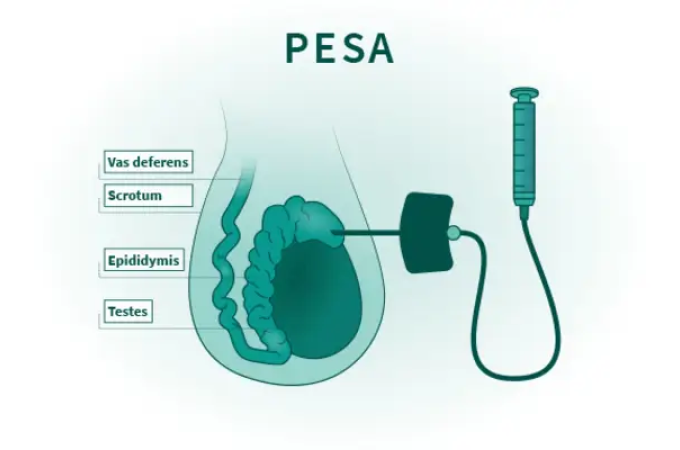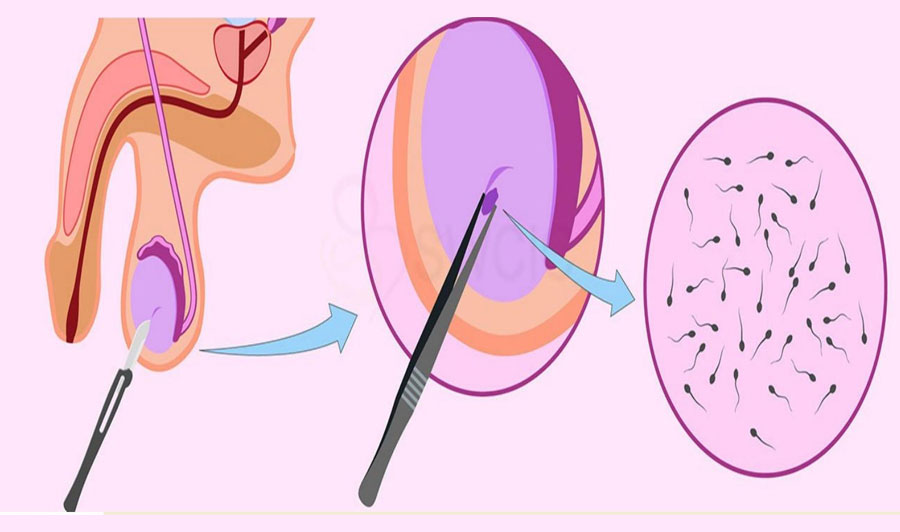TESA/PESA
TESA/PESA
Testicular Sperm Aspiration (TESA) and Percutaneous Epididymal Sperm Aspiration (PESA) are advanced procedures used to retrieve sperm from men with male infertility issues, particularly those who have a blockage or absence of sperm in their semen. These techniques are commonly used in conjunction with In Vitro Fertilization (IVF) or Intracytoplasmic Sperm Injection (ICSI) to help couples achieve pregnancy when traditional sperm collection methods are not viable. At TheFertilife, we offer these specialized procedures to help men overcome fertility challenges and increase the chances of successful conception.


What are TESA and PESA?
TESA (Testicular Sperm Aspiration) and PESA (Percutaneous Epididymal Sperm Aspiration) are procedures designed to retrieve sperm directly from the testicles or epididymis, respectively. These techniques are often employed when a man has a low sperm count, sperm blockages, or other conditions that prevent sperm from being present in the ejaculate.
TESA: This technique involves using a fine needle to aspirate sperm directly from the testicles. It is typically used in cases where sperm cannot be found in the epididymis or when there is testicular failure, which may result in very low sperm production.
PESA: PESA involves using a needle to aspirate sperm from the epididymis, the small tube located at the back of the testicle where sperm mature and are stored. PESA is usually performed when the sperm are blocked in the epididymis or when there is a problem with sperm transport, but sperm production is otherwise normal.
Both procedures are minimally invasive, typically performed under local anesthesia, and are usually part of a larger fertility treatment plan such as IVF with ICSI.
When are TESA and PESA Recommended?
TESA and PESA are most commonly recommended in the following situations:
Obstructive Azoospermia: This is a condition in which there is a blockage in the reproductive tract, preventing sperm from reaching the ejaculate. Obstructive azoospermia can result from previous surgeries, infections, or congenital abnormalities. PESA is often used in these cases to retrieve sperm from the epididymis.
Non-Obstructive Azoospermia: This condition occurs when sperm production in the testicles is very low or absent, but no blockage exists. In these cases, TESA is typically used to obtain sperm directly from the testicles, even if sperm count is low.
Male Factor Infertility: TESA or PESA may be recommended if sperm are not present in the semen due to issues like varicocele, hormonal imbalances, or genetic conditions that affect sperm production.
Failed Vasectomy Reversal: In cases where a vasectomy reversal has been unsuccessful or not possible, PESA or TESA can be used to retrieve sperm directly from the epididymis or testicles.
Genetic or Structural Abnormalities: Some men may have genetic conditions (such as Klinefelter syndrome) or structural problems in the reproductive system that affect sperm production. TESA or PESA can help bypass these issues and retrieve viable sperm for fertility treatment.
How are TESA and PESA Performed?
Both procedures are relatively simple and are performed under local anesthesia to minimize discomfort. Here’s what each procedure involves:
TESA (Testicular Sperm Aspiration):
- The procedure is performed under local anesthesia, and the testicle is gently numbed.
- A fine needle is inserted into the testicle, and a small amount of tissue is aspirated to retrieve sperm.
- The sperm collected is then examined in the laboratory to assess its quality and suitability for IVF or ICSI.
PESA (Percutaneous Epididymal Sperm Aspiration):
- PESA is performed using a local anesthetic to numb the area.
- A fine needle is inserted into the epididymis, and sperm is aspirated from the tubules.
- The sperm is then analyzed in the lab for its viability and used for ICSI, where a single sperm is injected into an egg to facilitate fertilization.
Both procedures are minimally invasive and are typically completed within 15-30 minutes. The sperm retrieved is then immediately used for fertilization in an IVF or ICSI cycle.
Advantages of TESA and PESA
Minimally Invasive: Both TESA and PESA are performed under local anesthesia and require only a small needle. These techniques are much less invasive than traditional surgery, reducing recovery time and complications.
Direct Access to Sperm: These procedures bypass the need for sperm to be ejaculated, making them ideal for men who cannot produce sperm naturally due to blockages or other conditions affecting sperm transport.
Improved IVF/ICSI Success: By retrieving high-quality sperm directly from the epididymis or testicles, TESA and PESA help improve the chances of successful fertilization when used in combination with IVF or ICSI.
Minimized Risk of Damage to Reproductive Organs: Since both procedures are minimally invasive, the risk of damage to surrounding reproductive organs is very low.
Option for Men with Genetic Issues: For men with genetic infertility issues, TESA and PESA can provide sperm for IVF/ICSI, helping to overcome challenges like azoospermia or genetic conditions affecting sperm production.
Risks and Considerations
While TESA and PESA are generally safe, there are some risks to consider:
Infection: As with any medical procedure, there is a small risk of infection at the site of the needle insertion.
Bleeding or Hematoma: There may be minor bleeding or bruising after the procedure, though this typically resolves on its own.
Damage to Sperm or Testicles: In rare cases, there is a small risk that the sperm retrieved may not be viable, or the testicles or epididymis may be inadvertently injured.
Emotional and Psychological Impact: Male infertility can have a significant emotional impact, and it is important to have support throughout the fertility treatment process.
Success Rates of TESA and PESA
The success rates for TESA and PESA depend on various factors, including sperm quality, the underlying cause of infertility, and the woman’s age. In general, these procedures have a high success rate when used in conjunction with IVF or ICSI.
TESA can be highly effective in men with non-obstructive azoospermia, although sperm retrieval may not always be successful if sperm production is very low or absent.
PESA is often very successful in cases of obstructive azoospermia, where sperm are blocked in the reproductive tract but are still produced in the testicles.
The success of IVF or ICSI depends on the quality of the sperm retrieved, the health of the woman, and the overall fertility treatment plan.
Is TESA/PESA Right for You?
If you or your partner are dealing with male infertility issues such as azoospermia, sperm blockages, or low sperm count, TESA and PESA may provide an effective solution. These procedures can help make sperm available for use in IVF or ICSI, increasing the chances of conception.
At TheFertilife, our experienced fertility specialists can evaluate your unique situation and recommend the best treatment options to help you achieve a successful pregnancy. If you are considering TESA or PESA, contact us today to schedule a consultation and learn more about how these procedures can help you on your fertility journey.

Best Infertility Doctor in Gurgaon, Dr. Anshika Lekhi, a renowned IVF specialist, offers exceptional infertility treatments.
Pages
Contact Us
- 7505 Basement Bougainville Street, near Supermart 2, Sector 43, Gurugram, Haryana 122009
- 98735 24270
- info@thefertilife.com
Updates
Check New updates below.


Copyright ©2025 | All Rights Reserved.
